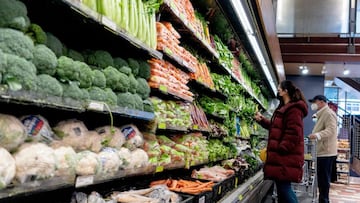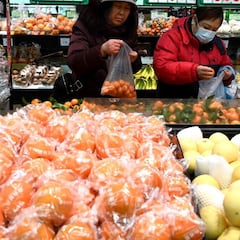Do food stamps roll over at the end of the year?
Millions of families receive SNAP benefits, formally known as food stamps, and many wonder if at the end of the year they can carry over their balance.


Each months millions of households, around 9.2 percent, receive Supplemental Nutritional Assistance Program (SNAP) benefits. For those who find themselves with a SNAP balance remaining at the end of the month, fret not, the balance will carry to the next month.
If SNAP benefits go unused for more than nine months, the payments will be automatically canceled. The benefits will not be deleted all at once. Rather, the funds will be taken out nine months after they were deposited.
Related News
- President Biden’s executive order on cryptocurrencies expected this week
- How long does it take for taxes to be processed?
- Majority of Americans expect a smaller tax refund this year
How long does it take to receive SNAP benefits?
Once you apply for benefits, if approved, you should begin receiving them within seven days. After the first payment you will then follow the SNAP issuance schedule.
What cannot be purchased with SNAP benefits?
- alcoholic beverages
- tobacco products
- hot food
- pet foods
- soaps
- paper products
- medicines and vitamins
- household supplies
- grooming items
- cosmetics
How to check your SNAP balance?
The balance left on your card will, in most case, appear at the bottom of your receipt.
Additionally, most states provide online login information for households to manage their account. Representatives from the office that manages SNAP benefits in your state should also be able to provide balance and other account information over the phone.
How much did SNAP benefits increase in value in 2021?
In 2018 Congress passed a farm bill that mandated that the US Department of Agriculture (USDA), which manages SNAP, evaluate if the amount distributed to families was sufficient based on the increased cost of living since the last increase. After the analysis was completed, the USDA applied a cost adjustment, the first since 1975. The new amount represented a twenty-one percent increase, meaning that a family of four would receive around $835.57 per month.
SNAP and food insecurity
A recent report from the USDA found that in 2020, around 10.5 percent of the country was experiencing food insecurity.
Related stories
Interestingly enough, the pandemic, thanks to government intervention, did not lead to an increase in the food insecurity compared to figures recorded in 2019. However, the report notes that of the households reported experiencing food insecurity, only a little over half of "reported that in the previous month, they participated in one or more of the three largest Federal nutrition assistance programs: SNAP; Special Supplemental Nutrition Program for Women, Infants, and Children (WIC); and National School Lunch Program."
While the report did not look at the link between income and food security directly, a connection was made. The researchers found that "food insecurity was strongly associated with income." The authors highlight that "35.3 percent of households with annual incomes below the official poverty line (household income-to-poverty ratio under 1.00) were food insecure, compared with just 4.9 percent of those with incomes at or above 185 percent of the poverty line."

